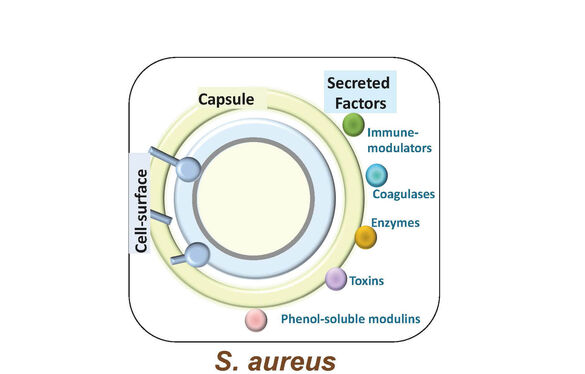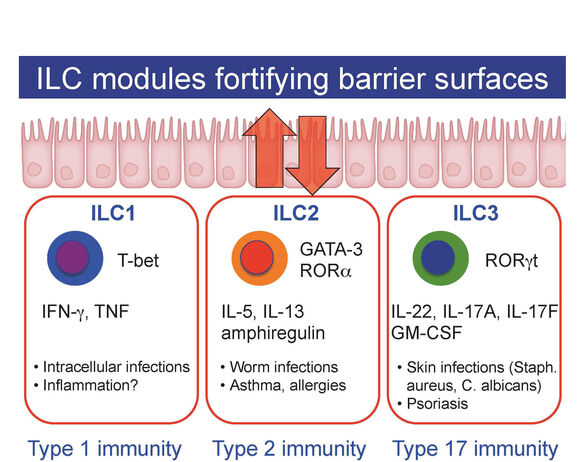A02: The role of skin-resident innate lymphoid cells for resistance to infection and colonization with the pathobiont Staphylococcus aureus
Institut für medizinische Mikrobiologie und Hygiene Universitätsmedizin Mainz und Interfakultäres Institut für Mikrobiologie und Infektionsmedizin, Universität Tübingen


Barrier surfaces of multicellular organisms are inhabited by a complex microbiota. The microbiota forms an intricate ecosystem that has important metabolic functions for the host but is also essential for the formation of a well calibrated immune system and for the maintenance of organ homeostasis. Interestingly, the microbial communities residing on epithelial surfaces do not only consist of harmless commensals but can also represent potentially harmful bacteria such as Staphylococcus aureus or Streptococcus pneumoniae. These are often referred to as pathobionts because, in most cases, they peacefully reside on epithelial surfaces but under certain conditions (such as immune alterations or barrier defects) may cause infections. Interestingly, in their “commensal state”, pathobionts do not express many of their virulence factors and it is believed, that the immune system may contribute to restraining the virulent behaviour of pathobionts likely by shaping residency patterns of microbial communities creating a “pathobiont niche”. The mechanisms of why pathobionts can turn virulent are not well investigated. S. aureus is an important and common cause of life-threatening skin infections which is further aggravated by the emergence of highly virulent and of antibiotically resistant strains (i.e., methicillin-resistant S. aureus, MRSA). Using S. aureus as a model organism, we will test our hypothesis that components of the innate immune system (i.e., innate lymphoid cells, ILCs) may be important factors in restraining S. aureus. Our analyses will shed light on the dynamic crosstalk between components of the innate immune system and bacterial pathobionts and may lead to a better understanding of how barrier defense is orchestrated. These important questions will be answered by combining the complementary expertise of a bacterial geneticist (Wolz) and an immunologist (Diefenbach) allowing for an iterative approach to powerfully investigate how changes of bacterial virulence factors change immune system fitness and vice versa. Our data may reveal important molecular targets that can be harnessed for the protection against life-threatening bacterial infections.

